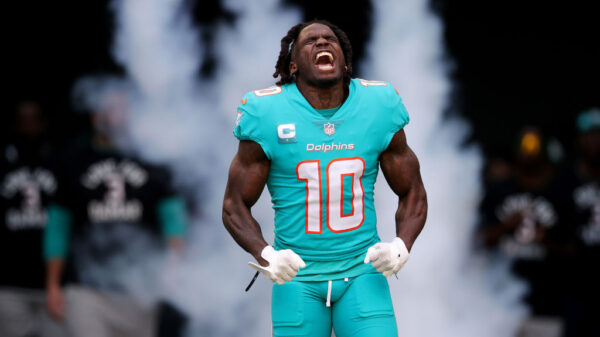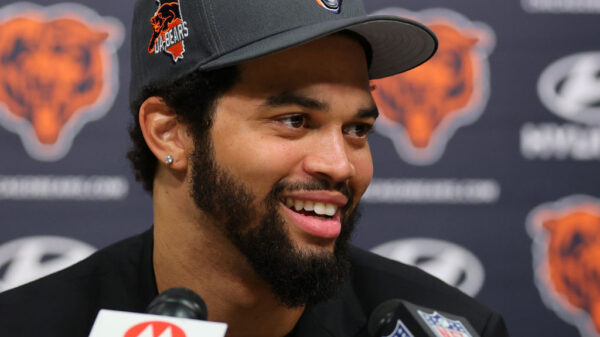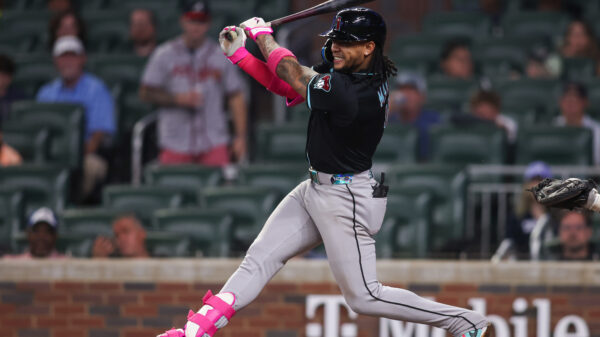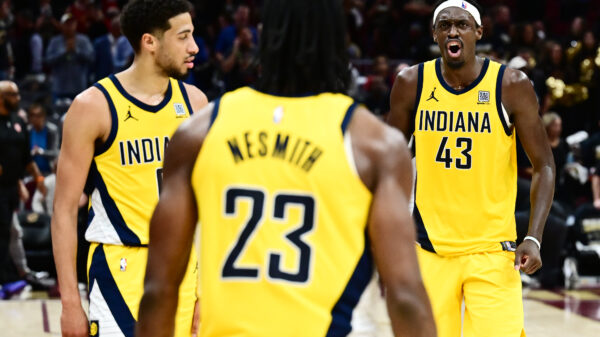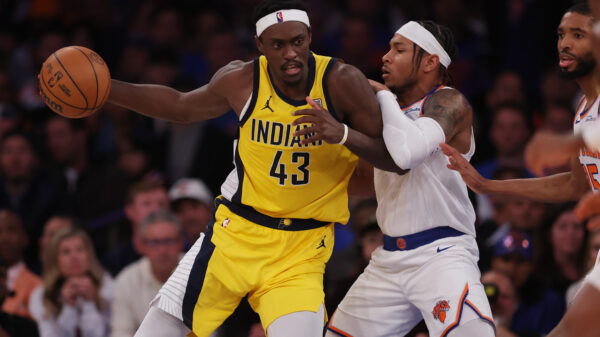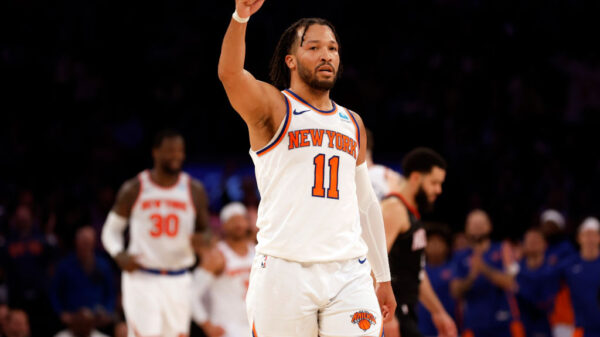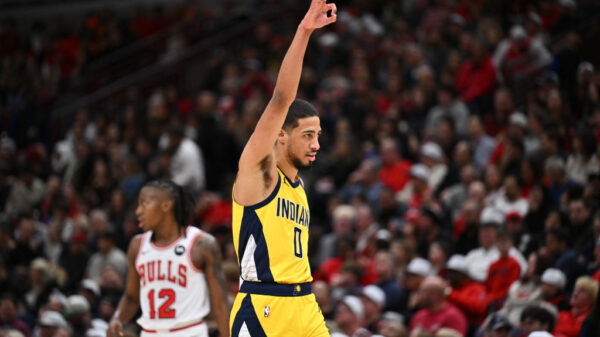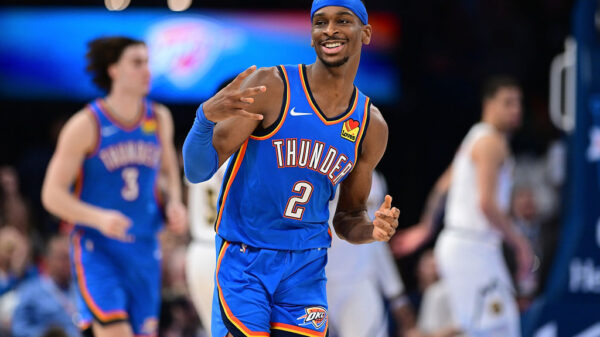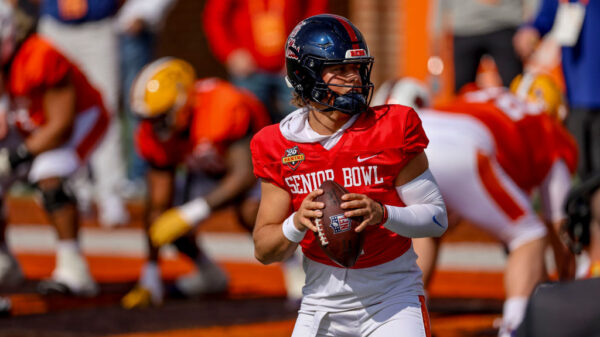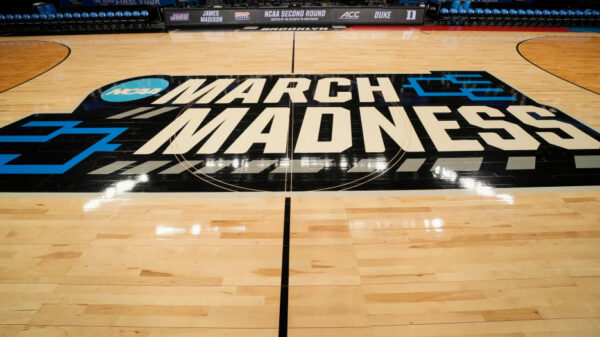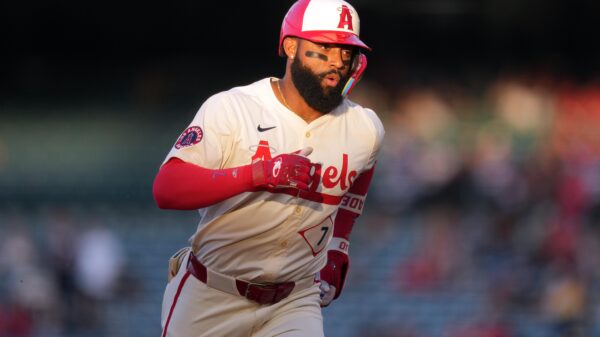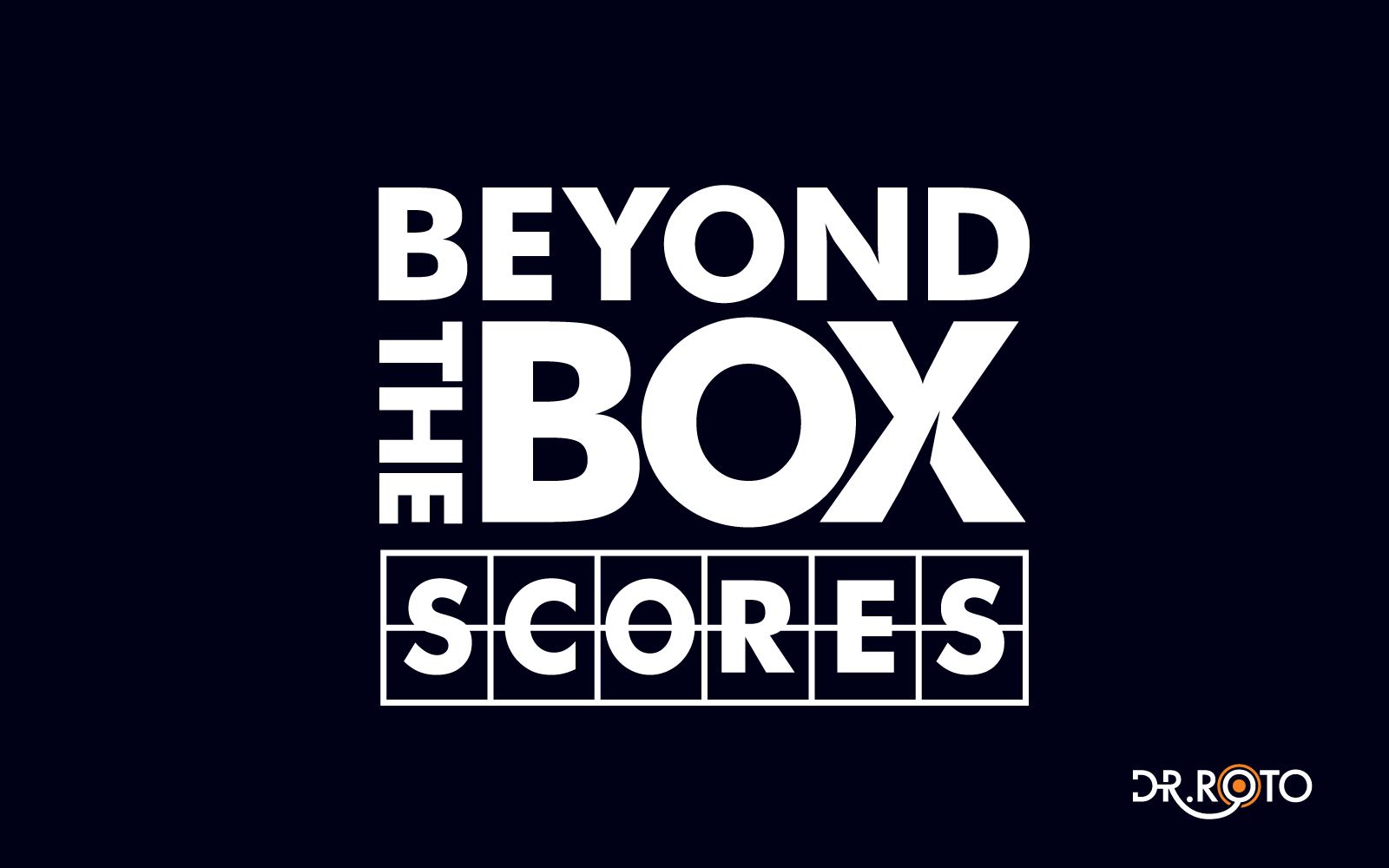Welcome back to Beyond the Box Scores! The Chicago Bears are next up in this series of 2023 retrospectives. Of all the teams in the league, the 2024 Chicago Bears may end up looking the most different from their 2023 counterparts (for fantasy, anyway), but that doesn’t mean we can’t learn anything from what happened in 2023. Here we go.
Ground Rules: Check out the first edition here for a full explanation of what’s going on. All scoring is Half-PPR, Week 18 stats are not included (so a full season is 16 games), and only players currently being drafted in the top 200 of Underdog Best Ball drafts are covered.
Quarterback
Justin Fields
The Box Scores
- Total Points: 230.6; QB17
- Games Played: 12
- Points Per Game: 19.2; QB8
Beyond The Box Scores
- Full Games Played: 11
- Points Per Full Game: 20.4; QB5
From a purely fantasy standpoint, Fields was excellent in 2023, a top-five QB in games where he was healthy. As you’d expect, a lot of his fantasy excellence was thanks to his production on the ground. Fields led all quarterbacks in designed rushing attempts per game with 6.3, and he was second to only Lamar Jackson with 3.3 scramble attempts per game. Overall, 39% of Fields’ fantasy output came on the ground, the third-most of any QB in 2023 behind Joshua Dobbs (not a good passer) and Jalen Hurts (tush-push merchant). On the other hand, that is a big step in the right direction from Fields’ 2022 season, in which a truly insane 55% of his fantasy production was on the ground. Fields also showed some improvement as a passer in the non-fantasy arena (shoutout to D.J. Moore): His 74.4% adjusted completion percentage was easily the best of his career, as was his 19.3% pressure-to-sack rate. On the other hand, Fields still had a negative EPA per drop-back, and only Bryce Young had a lower success rate of the 22 QBs with at least as many attempts as Fields’ 370.
Takeaway
At the end of the day, none of this really matters for 2024 Redraft leagues. Fields was recently traded to the Steelers, where he will be backing up Russell Wilson. Wilson has struggled in his own right to provide efficient quarterback play over the past few years, so perhaps Fields eventually gets a shot, but there is simply no good argument for drafting a backup quarterback in any standard Redraft league … especially not at Fields’ truly ridiculous QB19 ADP. That ADP has trended down since Fields was traded to the Steel City, but it has a LOT more trending down to do before he’s anything other than a waste of a pick. In the vast majority of leagues, the right approach will be to let someone else take Fields. If no one does, it is worth keeping an ear to the ground and potentially making an early waiver wire move if Wilson starts to struggle, as we do know that Fields is a quality fantasy option when he plays.
Want more expert NFL Draft and Fantasy Football content? Subscribe to DrRoto.com!
Running Back
Roschon Johnson
The Box Scores
- Total Points: 83.1; RB47
- Games Played: 14
- Points Per Game: 5.9; RB52
Beyond The Box Scores
- Full Games Played: 13
- Points Per Full Game: 6.3; RB47
Johnson was considered by many to be a sleeper heading into his rookie year; the narrative was that he was one of the more talented backs in the class, just unlucky to have found himself behind a generational prospect in Bijan Robinson at Texas. With that in mind, his debut season has to be considered a disappointment. Despite his backfield-mates Khalil Herbert and D’Onta Foreman combining to miss 13 games, Johnson averaged just 5.6 carries and 2.9 targets per game. His best fantasy game of the season came in his Week 1 NFL debut, where he caught six of seven targets and scored a rushing touchdown en route to 14.5 Half-PPR points … but even in that game, he had exactly zero touches in the first half. For the season, Johnson had twice as many games below six points as he had above, making him essentially a useless fantasy asset. He was used primarily as a passing-down back, and he did grade out well as a pass-blocker and average as a receiver. But he was inefficient as a runner, ranking 40th out of 54 RBs with -0.06 yards created per carry and 50th out of 59 RBs in PFF Rush Grade.
Takeaway
Following the Bears’ signing of D’Andre Swift, Johnson is currently being drafted as the RB49 in ADP. Unfortunately, I think even that is too high. While that is the range of the draft where the running backs available are handcuffs and dart throws, Johnson is not even a true handcuff. We saw last year what this backfield looked like without Swift, and he never saw a consistent substantial role. He is also likely to cede some of the passing-down work that he did see to Swift, an above-average receiving back (in theory, anyway). Given that there are other players behind him in ADP (Elijah Mitchell, Antonio Gibson, Tyler Allgeier, etc.) who would likely be actual quality fantasy options if their teams’ top running backs went down, I recommend passing on Johnson in most cases.
Khalil Herbert
The Box Scores
- Total Points: 97.4; RB42
- Games Played: 11
- Points Per Game: 8.9; RB39
Beyond The Box Scores
- Full Games Played: 11
- Points Per Full Game: 8.9; RB39
Like Johnson, Herbert came into the 2023 season with some hype and was mostly a disappointment. He missed five games due to injury and never really saw a full workload of touches thanks to the presences of Johnson and Foreman. With that said, Herbert was still effective when he had the ball in his hands, as he has been his whole career. Among the 50 backs to see at least 100 carries in 2023, he ranked 14th in PFF Rush Grade, ninth in PFF Elusive Rating, 18th in relative yards per carry, 14th in yards after contact per attempt, 18th in yards over expectation per attempt, and 11th in success rate. This efficiency turned into production in the games where he did see volume, as Herbert averaged 16.6 Half-PPR points in the four games where he recorded at least 15 carries. However, he averaged just 4.9 points per game outside of those four games, as a lack of receiving work meant he was entirely dependent on being fed carries.
Takeaway
Unfortunately, Herbert, again like Johnson, is very unlikely to see a fantasy-relevant role following the Bears’ addition of D’Andre Swift. But I am slightly more willing to draft Herbert, whose ADP is essentially equivalent to Johnson’s at RB51. For one, we saw in the final three games of the season (with D’Onta Foreman a healthy scratch) what this backfield would likely look like if Swift were to get hurt, and two of those three games saw Herbert rack up over 18 carries and record over 18 fantasy points. For another, I think there’s a non-zero chance Herbert eventually earns the lead early-down role in this offense. Don’t get me wrong, it’s not likely that he usurps Swift, who just signed a big contract. But Swift graded as a worse rusher than Herbert in just about every efficiency metric available in 2023, and there is a precedent of free-agent RB signings eventually losing out to more efficient incumbents — Miles Sanders, another former Eagles running back, comes to mind. Combining that slim chance with his potential upside if Swift were to get injured makes Herbert a player I’m willing to take a chance on in the later rounds of drafts.
Wide Receiver
D.J. Moore
The Box Scores
- Total Points: 230.1; WR7
- Games Played: 16
- Points Per Game: 14.4; WR10
Beyond The Box Scores
- Games Played With Justin Fields: 12
- Points Per Game With Justin Fields: 16.7; WR4
You read that right. If we just look at games where Justin Fields played more than 50% of the Bears’ snaps (or, perhaps more relevantly, where Tyson Bagent didn’t play the majority of snaps), D.J. Moore was a top-four fantasy football wide receiver in 2023. The key difference was that Fields, for all his flaws, is a very good deep passer (fourth in the league in PFF Passing Grade on throws of more than 20 yards). In games where Fields played the majority of snaps, DJM had a 79% catchable target rate on an 11.7 ADOT. In the four games with Bagent, those numbers were 71% and 11.1. Moore also benefitted from a lack of competition, ranking seventh in overall target share, fourth in first-read target share, and fifth in air-yards share for the season. With those numbers and his talent (he finished ninth in PFF Receiving Grade), Moore’s WR10 PPG finish seems almost disappointing. To be fair to Moore, the Bears did rank sixth-lowest in total pass attempts, so his elite target share numbers actually landed him just 17th in total targets and 14th in total air yards.
Takeaway
On the one hand, Moore could be set up to take another leap forward in 2024, as Caleb Williams (no slouch with the deep ball himself) could immediately be the best quarterback the six-year vet has ever played with, even in his rookie year. This offense should also regress closer toward average in terms of pass attempts with Williams under center. On the other hand, Moore is unlikely to maintain his individual dominance of the Bears’ receiving attack in 2024. The Bears just traded for Keenan Allen, still a target hog at 31 years old, and have been heavily linked to potentially drafting a stud rookie receiver with their ninth overall pick. I think it’s fair to expect an increase in overall team volume and efficiency that will roughly cancel out a likely decrease in individual target share for Moore. With that in mind, DJM’s current WR11 ADP feels just about right (perhaps a tad low, but not by much) compared to his WR10 finish in points per game last year.
Darnell Mooney
The Box Scores
- Total Points: 63.4; WR82
- Games Played: 15
- Points Per Game: 4.2; WR90
Beyond The Box Scores
- Full Games Played: 13
- Points Per Full Game: 4.5; WR85
Mooney’s 2023 was rough, no matter how you slice it. He was thoroughly unproductive from a fantasy standpoint, with as many complete donuts as he had games in the top 40 receivers (two of each). And given that he had that production as the Bears’ weekly WR2, his per-route and per-snap numbers are even worse. He ranked 86th out of 96 qualified receivers in terms of yards per route run, as well as 83rd of 96 in PFF Receiving Grade.
Takeaway
On the bright side, Mooney has found himself in a shockingly good situation heading into 2024. He signed a deal with the Falcons, who have a hole at WR2 and should have a much-improved passing offense with the arrival of Kirk Cousins. But I just can’t convince myself to be in on a player with such an uninspiring profile. That “WR2” label next to his name on the depth chart is also likely fool’s good, as I can’t see Mooney being any higher than third, if not fourth, in targets on a team with Drake London, Kyle Pitts, and Bijan Robinson. I guess he’s not the worst pick in Best Ball at his WR72 ADP, but I’d rather chase a higher-upside player at that spot in Redraft, even if they have a less certain role; if we’re sticking with the uninspiring veteran WR mold, I’d rather have guys like Tyler Boyd or Zay Jones, who are both being drafted later than Mooney.
Tight End
Cole Kmet
The Box Scores
- Total Points: 139; TE7
- Games Played: 16
- Points Per Game: 8.7; TE8
Beyond The Box Scores
- Full Games Played: 14
- Points Per Full Game: 9.0; TE8
I’m a little ashamed to admit I didn’t mention Kmet once in 18 in-season editions of this article … but only a little. After all, Kmet’s 2023 season wasn’t particularly noteworthy. He was the TE8 in Half-PPR scoring in Week 1, and he finished as exactly that on the season. He also ranked solidly as a backend TE1 in target share at seventh. He finished lower in total targets because of the aforementioned low volume of Chicago’s passing game but made up for it with the fifth-most red zone targets and fifth-most TDs of any tight end. Kmet was simply what he was: a backend TE1. However, Kmet’s season, like those of many backend TE1s in the past, was deceptively mediocre. He was just as close to the TE17 (Kyle Pitts, 6.7 points per game) as he was to the TE5 (George Kittle, 10.7). He also doesn’t fit the mold of a truly elite fantasy tight end, as his 12.8% pass-block rate and 4.0 yards after the catch per reception both ranked in the bottom 10 of 44 players at the position with at least 30 targets, although he did also rank seventh among that group with a 77.7 PFF Receiving Grade.
Takeaway
At first glance, Kmet seems like a value at his TE15 ADP. After all, he just finished as the TE8 and is likely to get an upgrade at quarterback. But I’m not particularly interested in drafting Kmet for 2024. His 2023 success was mostly the result of volume, which will be much harder to come by with Allen, Swift, and potentially a stud rookie WR in town. This is without even mentioning the arrival of a new tight end in Gerald Everett — the former Charger is not going to steal Kmet’s job, but a profile like Kmet’s is very vulnerable to losing even a small chunk of snaps, and Everett is a more impressive athlete. Most importantly, Kmet simply is very unlikely to have a truly difference-making season; he simply doesn’t check any of the boxes we look for in an elite fantasy TE. He’s unlikely to be a top-two (or even three?) target on his team, he is asked to pass-block too often, and he doesn’t generate enough YAC. Given that players in his ADP range are not likely to be your top tight end anyway, I’d rather draft a player like Luke Musgrave or Micahel Mayer than Kmet; they may be less likely to have top-15 seasons, but they have a much greater chance at top-five seasons (if only because Kmet’s is essentially zero), which is what you’re really looking for in a TE2.


